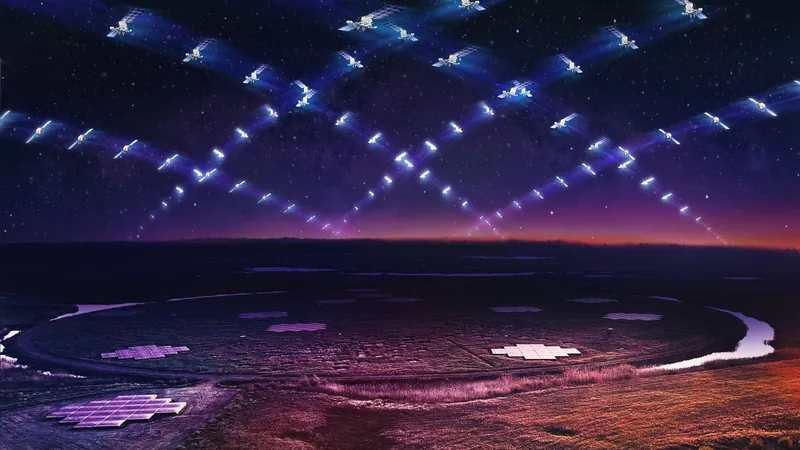
Second Generation Starlink Satellites: A Radio Sky Nightmare?
2024-09-20
Introduction
In the quest for global internet access, the rapid deployment of satellite megaconstellations poses a significant threat to our night skies. Astronomers across the globe are raising alarms about the impact these satellites have not only on visible light observations but now, alarmingly, on radio frequencies as well. A groundbreaking study reveals that the latest second-generation Starlink satellites are leaking radio signals a staggering 32 times more than their predecessors. This raises crucial questions: Are we on the brink of compromising the integrity of radio astronomy?
The Starlink Initiative
Starlink, the ambitious project by SpaceX, aims to deliver high-speed broadband internet to every corner of the world through a vast network of small satellites, each measuring about 2.8 meters in length. As this constellation of thousands of satellites continues to expand, it promises to provide connectivity to remote areas where traditional infrastructure is either impractical or prohibitively expensive. However, as more satellites are launched into orbit, the risk to astronomical observations grows exponentially.
The Broader Context
SpaceX isn’t alone in this pursuit. Since 2019, various companies, including OneWeb, have joined the fray, launching hundreds of satellites. Projections indicate that these organizations may collectively deploy over 100,000 satellites into space. This surge in satellite numbers raises an urgent concern: the resultant emissions—visible, radio, or otherwise—could severely disrupt astronomical observations from Earth, making it increasingly difficult, if not impossible, to study the cosmos.
The LOFAR Findings
Recent assertive findings from the Low Frequency Array (LOFAR) have confirmed suspicions: the Starlink satellites are emitting radio waves that could drown out signals from distant celestial bodies. As SpaceX rolls out its new generation of “V2-mini” satellites, these risks magnify. The fresh LOFAR observations show that these new satellites could produce radio emissions that are ten million times brighter than those of the faintest objects ever detected by LOFAR! This means that for astronomers attempting to study radio phenomena in the universe, the celestial noise from these satellites could obliterate their efforts.
The Urgent Need for Regulation
The urgency of this situation cannot be overstated. Without prompt regulation and oversight on satellite emissions, the future of astronomical exploration could be in jeopardy. Organizations like ASTRON, which operates LOFAR, emphasize the need for collaboration and stringent guidelines to protect our ability to observe the universe. Published from the Netherlands, a nation that boasts a cooperative approach to safeguarding radio astronomy despite its high population density, ASTRON serves as a model for what could be achieved with unified efforts.
Conclusion
The call to action is clear: satellite companies, policymakers, and the scientific community must come together to manage the expanding presence of megaconstellations in our skies. If we fail to act, we risk losing sight of the wonders that the universe has to offer—potentially forever. With millions of dollars and countless hours invested in understanding our cosmic home, is it worth jeopardizing everything for the sake of higher internet speed? The answer is a resounding no. The time to protect our night sky is now.


 Brasil (PT)
Brasil (PT)
 Canada (EN)
Canada (EN)
 Chile (ES)
Chile (ES)
 España (ES)
España (ES)
 France (FR)
France (FR)
 Hong Kong (EN)
Hong Kong (EN)
 Italia (IT)
Italia (IT)
 日本 (JA)
日本 (JA)
 Magyarország (HU)
Magyarország (HU)
 Norge (NO)
Norge (NO)
 Polska (PL)
Polska (PL)
 Schweiz (DE)
Schweiz (DE)
 Singapore (EN)
Singapore (EN)
 Sverige (SV)
Sverige (SV)
 Suomi (FI)
Suomi (FI)
 Türkiye (TR)
Türkiye (TR)